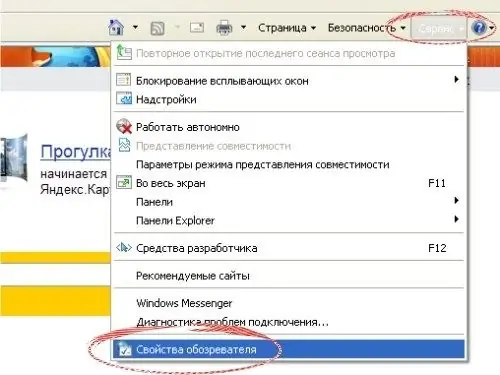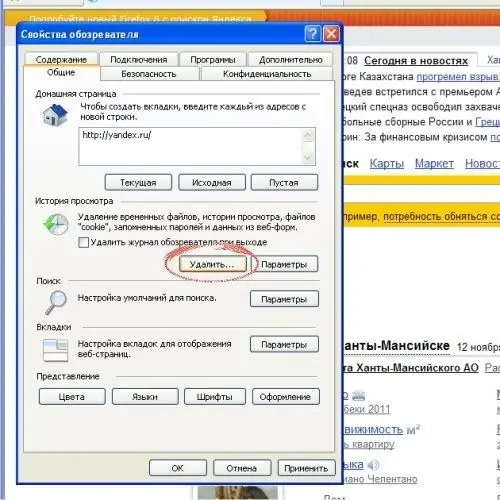- Author Lauren Nevill [email protected].
- Public 2024-01-11 01:04.
- Last modified 2025-01-23 15:15.
Links to all visited sites are stored in the computer memory, in the temporary files folder. To remove the addresses of Internet resources, you need to delete the necessary files from this folder. Let's look at how to do this using the example of two browsers: Internet Explorer and Google Chrome.

Instructions
Step 1
Internet Explorer
Launch your browser. In the browser window, in the upper panel, go to the "Service" tab and select "Internet Options".

Step 2
In the "Internet Options" window that appears, in the "Browsing history" item, click on the "Delete" button (note that the "Options" button next to it allows you to automatically configure the deletion of temporary files).

Step 3
Then, in the "Delete browsing history" window, you are asked to check the boxes next to the items of interest to us. You can check the "Journal" and "Web Form Data" items. It is advisable to restart your browser for the changes to take effect.

Step 4
Google chrome
In this case, the procedure is not much different from the standard Microsoft browser. The main difference is in the location of the required tabs with commands. Download Google Chrome. To enter the settings, click on the icon in the upper right corner of the browser, depicting a wrench. In the opened tab, click the "Options" button.

Step 5
After that, Google Chrome opens a new tab, where kinds of settings are offered. In the left column of sections, select "Advanced".

Step 6
In the tab that opens, click the "Delete data on viewed pages" command. After that, a tab will open with a proposal to select temporary files to be deleted. Of the six options, the one you are most interested in is "Clear saved form autocomplete data." Put a check mark in front of this item and click the "Delete data" button.
At the end of the procedure, you should restart the browser.






